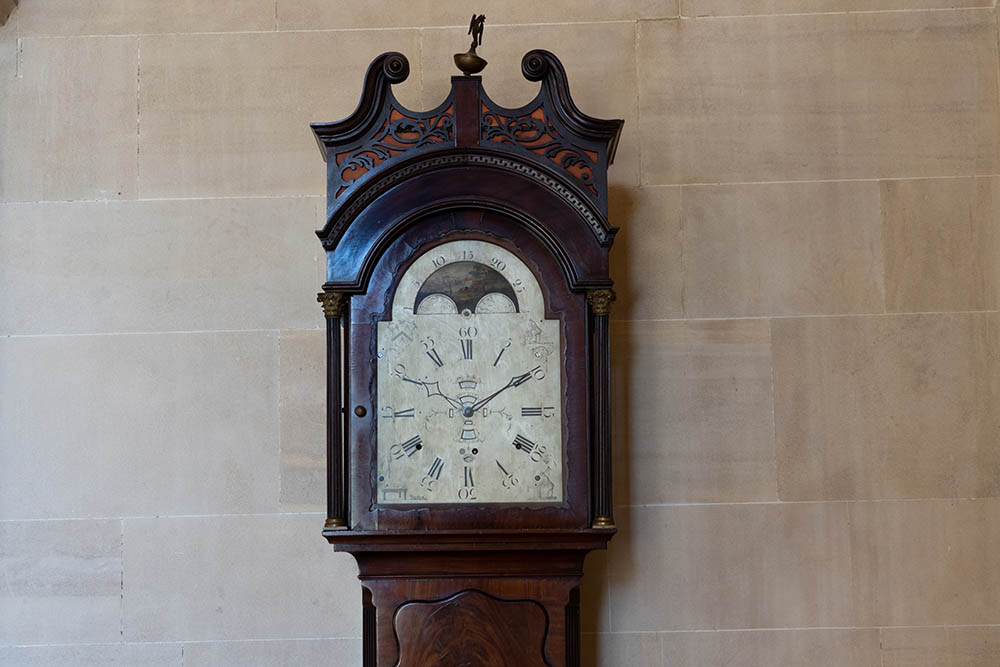How to Move a Grandfather Clock: 3 Tips & Tricks
-
Pete Ortiz
- Last updated:

Grandfather pendulum clocks are often family heirlooms with both material and sentimental value. Their delicate inner workings require care to transport the clock, which is why hiring movers is typically recommended. But with a little patience and a friend, you can prepare and move your grandfather clock yourself. Let’s find out what you will need and how to go about it.
Before You Begin
Before moving your grandfather clock, you’ll need to gather some items. We also strongly recommend caution when handling the internal components within antique grandfather clocks, some of which can be fragile. Let’s check out what you need to gather.
- Moving truck
- Packing blankets
- Gloves
- A friend to help
- Bubble wrap
- Wrapping paper/newspapers
- Dolly/hand truck
- Moving boxes
- Styrofoam
- Moving straps
- Moving crate (optional but recommended)
Once you’ve gathered all those up, it’s time to move your grandfather clock. Let’s check out what steps you’ll need to take.
The 3 Tips for Moving Your Grandfather Clock
1. Disassemble Your Grandfather Clock
This is perhaps the most complex part of the job. You’ll need to don some gloves to protect your hands while handling the clock’s parts. Every grandfather clock is unique in some way, but you’ll have to remove the chains, weights, pendulum, and other components. If possible, refer to any documentation the clock comes with. Wrap each part in newspaper or wrapping paper, bind them with rubber bands, and clearly label each bunch of components.
2. Pack Everything Up
To transport the clock’s base, ideally, you’ll have a moving crate to minimize damage to its frame. If not, you can take some steps to protect your clock. Once all the inner workings have been removed, fill the inside of the clock with moving blankets or padding. These will help prevent vibrations on the road from shattering glass in the clock. If possible, find out if you can remove the glass panes and transport them separately in a more secure container.
Labeled components should be packed into moving boxes with layers of bubble wrap and labeled once more—there’s no downside in redundancy when it comes to moving something so important. For chimes and other small parts that don’t come apart from the clock, make small Styrofoam cutouts to protect them.
3. Move the Clock
Moving a grandfather clock is no joke, requiring a lot of physical exertion and planning to move. You’ll need a strong friend or helper and to plan a route out of your home. The route should be clear of any obstructions like furniture, cords, and items on the ground.
Load the grandfather clock onto your dolly and have one person hold the front of the clock and maneuver the dolly, while the other person holds the back of the clock steady. If possible, have a third person clear the way and help use callouts to make moving the clock a smooth process.
Grandfather clocks are typically designed to never lie on their side or back, so you should move them upright. As we mentioned earlier, moving crates with appropriate padding are the best way to transport a clock without damaging it. However, if that’s not possible, you should strap the grandfather clock with moving straps to prevent it from moving during transport.
Final Thoughts
Moving a grandfather clock is a daunting task, but it’s not as bad as you’d think. It just requires some patience, another person, and some basic packing supplies. In most cases, the job only takes an hour or two to accomplish.
Featured Image Credit: ANGUK, Shutterstock
Contents


